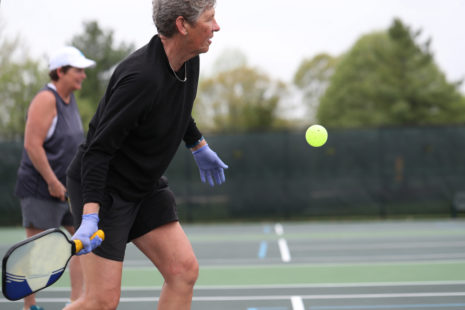Rehabilitation for a hip injury or after hip surgery involves a structured and progressive program designed to improve hip strength, flexibility, mobility, and overall function. The specific approach will depend on the type and severity of the hip issue, as well as individual factors.
Here are some general steps and exercises typically involved in hip rehabilitation…
- Initial Rest and Pain Management – In the early stages of hip rehabilitation, rest and pain management may be necessary to allow the injured hip to heal. Ice, compression, and elevation can help reduce swelling and pain.
- Passive Range of Motion Exercises – Gentle, passive range of motion exercises may be initiated by a physical therapist to maintain hip joint mobility and prevent stiffness.
- Active Range of Motion Exercises – As healing progresses, active range of motion exercises are introduced. These exercises involve using the muscles around the hip to move the joint actively through its full range of motion.
- Strengthening Exercises – Strengthening exercises target the muscles around the hip joint, including the glutes, hip flexors, hip abductors, and hip adductors. Examples of exercises may include bridges, leg lifts, clamshells, and resistance band exercises.
- Balance and Proprioception Exercises – Balance and proprioception exercises are important for improving stability and preventing falls. These exercises challenge the body’s sense of balance and body awareness.
- Functional Exercises – Functional exercises mimic everyday activities and sports-specific movements to prepare the hip for real-life challenges. These exercises focus on improving the hip’s ability to support and stabilize during dynamic movements.
- Stretching and Flexibility Exercises – Stretching exercises are crucial to improve hip flexibility and maintain a good range of motion. Focus on stretching the hip flexors, hamstrings, and other hip-related muscles.
- Cardiovascular Conditioning – Gradually incorporate cardiovascular exercises like walking, cycling, or swimming to improve overall fitness and circulation.
- Education and Body Mechanics – A physical therapist will provide education on proper body mechanics and techniques for activities of daily living to prevent further hip injuries.
- Gradual Progression – Rehabilitation should be a gradual process, increasing intensity and complexity as the hip heals and gains strength.
- Pain Monitoring – Throughout the rehabilitation process, monitor pain levels and communicate with your physical therapist or healthcare provider about any concerns or changes in symptoms.
It’s necessary to work with a qualified physical therapist or healthcare professional to design a personalized rehabilitation plan for your specific hip condition. They can assess your current condition, set appropriate goals, and guide you through the exercises and progressions safely and effectively. Consistency and commitment to the rehabilitation program are crucial for achieving optimal results.




